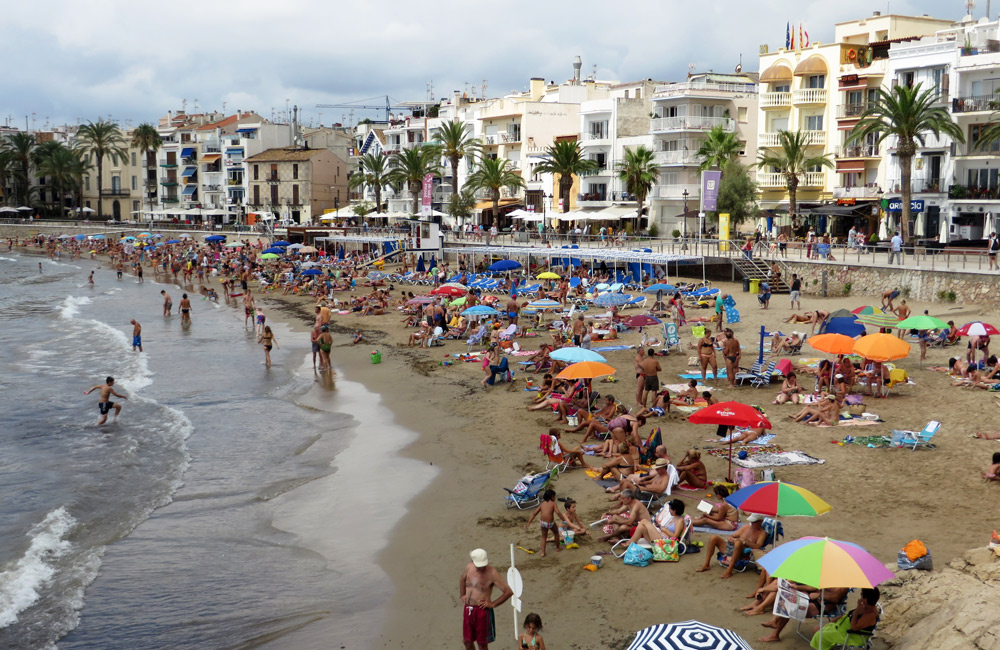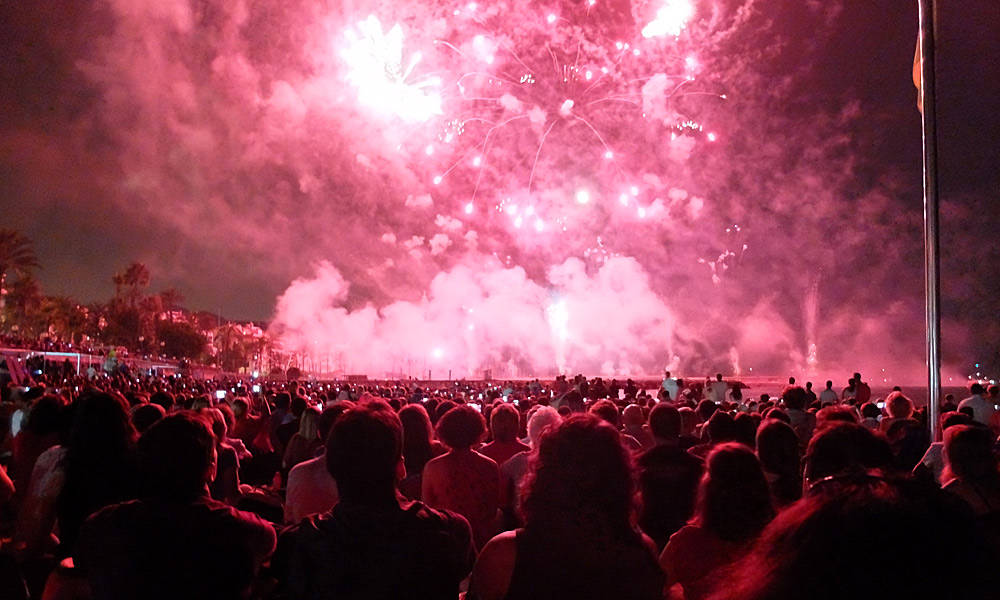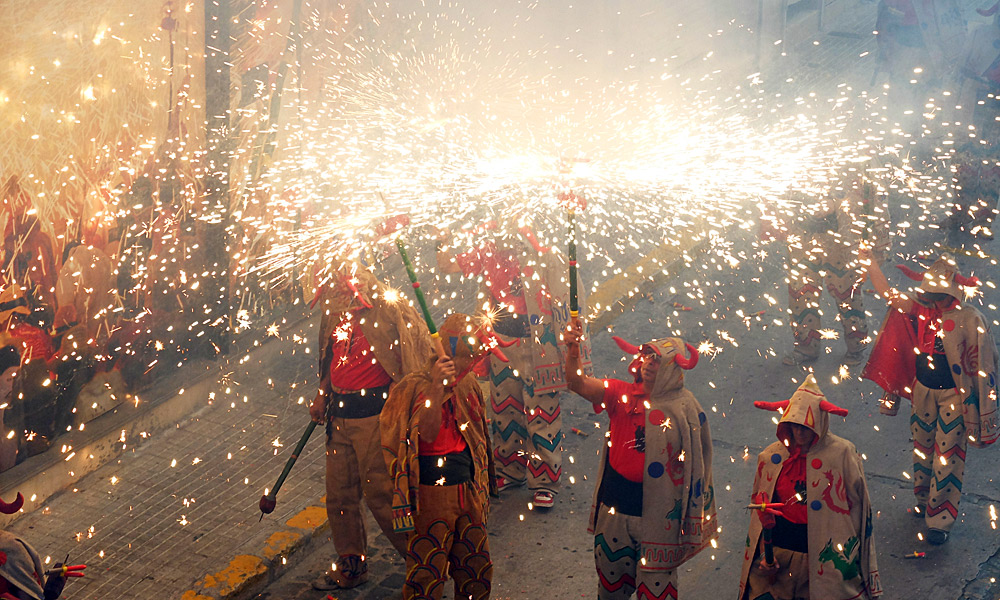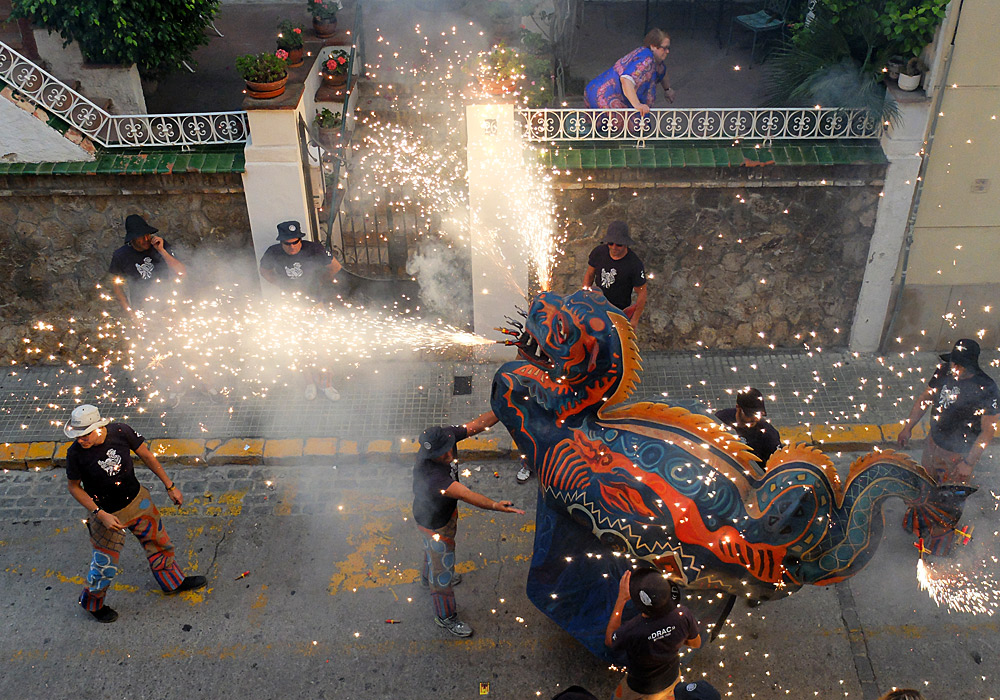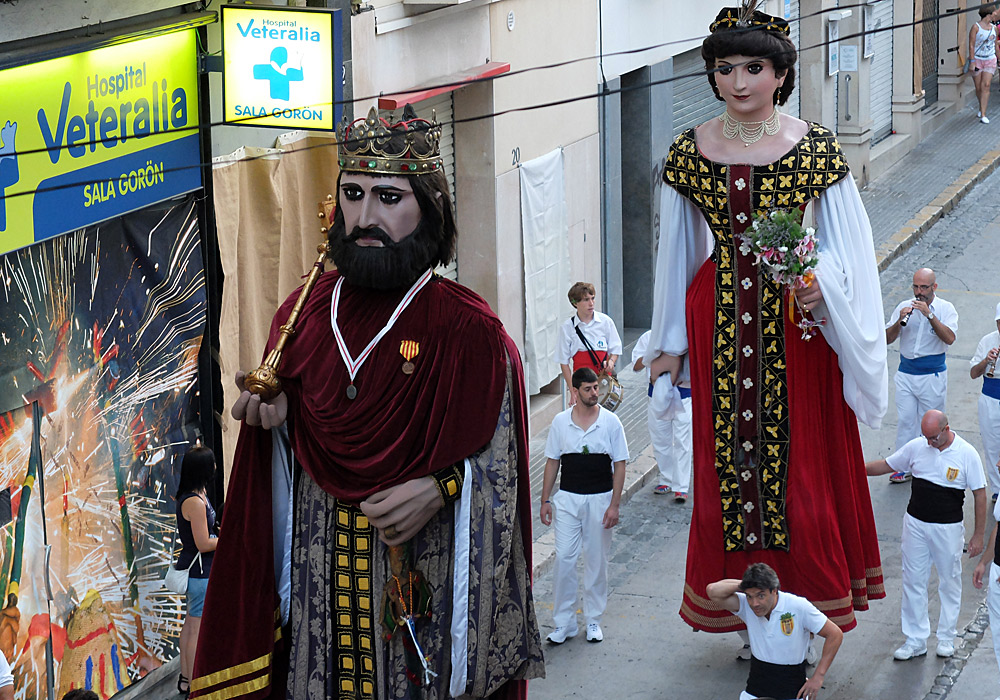Sparks fly at colourful Spanish fiesta
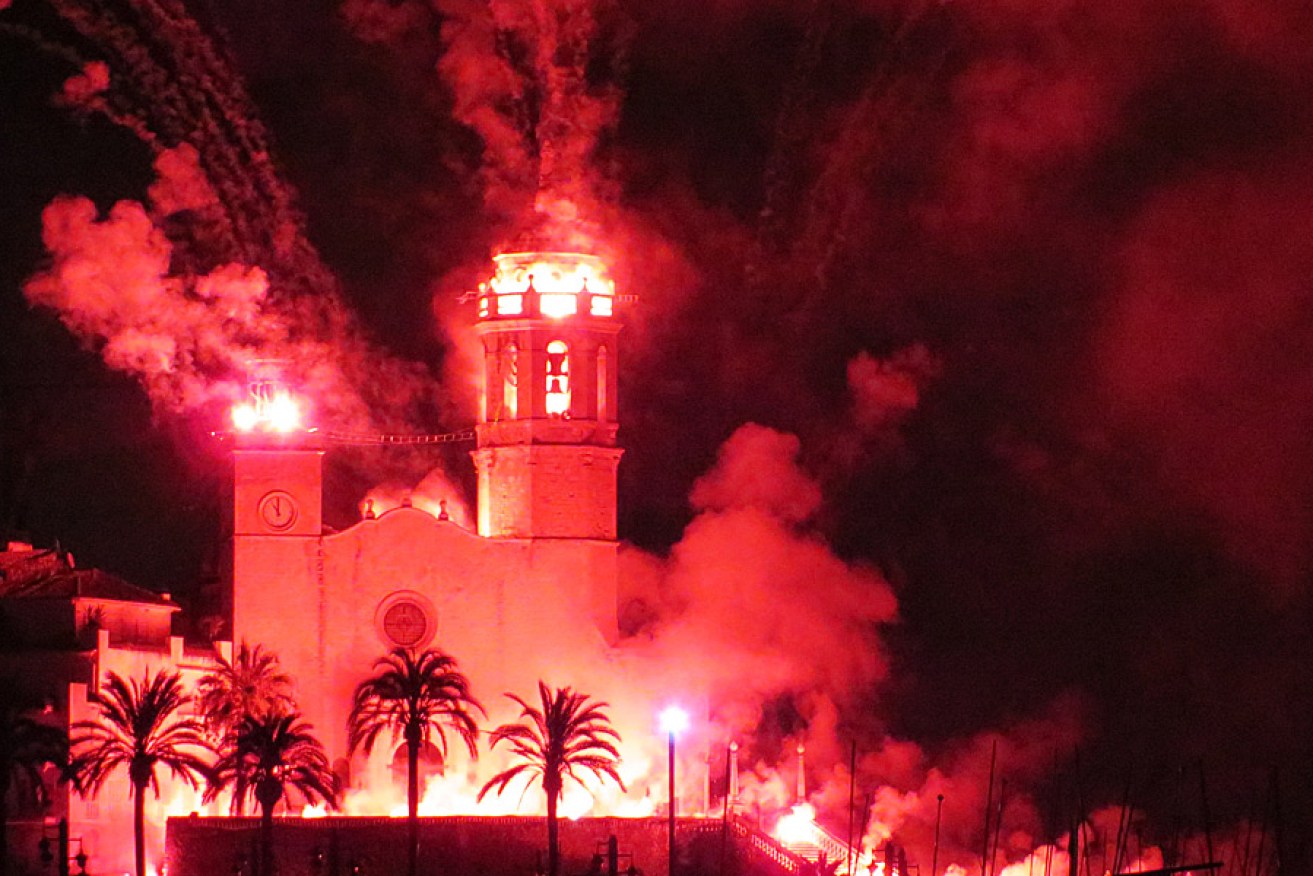
Fireworks exploding from Sitges' Sant Bartomeu Church. Photo: Suzie Keen
Shopkeepers and hoteliers all over the Spanish seaside town of Sitges were pasting large sheets of paper over their exterior windows and glass entrances.
In a large city or strife-torn region of the world, the sight might have been alarming; in this laissez-faire holiday spot it merely piqued curiosity.
“It’s for the parade,” explained a local.
“Because of the fireworks.”
Several things had drawn us to Sitges – not least of which were my memories of visiting the town on a round-Europe Kombi trip some 15 years earlier – but the fact that our stay coincided with the town’s major annual festival, the Festa Major de Sitges, held in August, was a stroke of luck.
Just 40 minutes’ drive south-west of Barcelona, Sitges is a village of narrow, character-filled streets that invite the visitor to meander, enjoying the whitewashed, art-deco-style architecture and stopping to browse in shops, sip a cocktail at one of the numerous bars, or dine alfresco along the beachfront.
Its tranquil, palm-tree-lined beaches, the main one of which is overlooked by the Baroque-style Church of Sant Bartomeu, are a key drawcard. They don’t have the golden sands or space Australians are used to, but they’re packed in peak season. Swimmers and sunbakers can rent banana lounges to secure a couple of square metres of space, with the pay-off being a drinks service that comes to you and bathwater-warm, ultra-calm ocean waters where any body of any age and any type can feel comfortable.
The cosmopolitan feel of Sitges is part of its attraction. It’s renowned for being gay and lesbian-friendly, and after Barcelona’s annual Circuit Festival (Spain’s largest queer event, also in August), its bars and clubs are pumping.
Despite being so popular, the town retains its charm, and the Festa Major de Sitges is evidence of the strong cultural traditions underlying the resort facade.
Held in honour of Sant Bartomeu, the town’s patron saint, the festival is one of many such events throughout Spain’s Catalonia region. Although the annual festas inevitably attract tourists, this is not their aim; they are presented by and for the local residents.
Our first experience of the week-long festivities was a parade of traditional Catalan musicians representing dozens of different groups. Thousands lined the small streets to watch, but there was no sign of the crackers about which we’d been warned.
Other cultural displays – including music, dancing, and human-tower performances known as castells – occurred throughout the Festa week, while free open-air concerts featuring contemporary live music and DJs, plus pop-up bars, had the beachfront buzzing each night.
The culmination of the celebrations was an impressive fireworks display centred on the Sant Bartomeu Church, which saw thousands of people – from families with babies to elderly couples using walking sticks – cramming the beachfront.
The display wasn’t due to begin until 11pm, but the excitement began building hours earlier. Many locals had brought picnics, while the less-well-prepared queued at a permanent beachfront stall selling melt-in-the-mouth churros (dripping with chocolate and caramel sauce and unlike any tasted before or since).
By 10.55pm, we were packed along the beach like sardines. All eyes were on the church, shrouded in gold light, and when the first explosions erupted from its roof they heralded a spectacular 20-minute display to rival Sydney’s New Year’s fireworks.
The party seemed set to continue well into the night, yet wandering back to the hotel, past dozens of groups of excited young Spaniards, we were still wondering: why was all that paper covering the windows?
Next morning, sometime around 6am, a racket from the streets below reached through the windows of our first-floor room.
It was eardrum-piercing loud – and getting louder.
Throwing open the balcony doors, we were greeted by the strangest spectacle: an approaching parade of folk dancers twirling batons, drummers, flute players, giant twirling puppets (gegants) with papier-mache heads, a spinning dragon-like creature spitting fire, and exploding firecrackers on the ends of poles being held aloft like umbrellas by characters dressed as devils.
Sparks were flying everywhere and the air quickly became laced with the smell of sulphur.
The correfocs (firerun) is a key part of Festa celebrations in Catalonia. Yet at this stage of the parade, on this particular street, it was watched by only a handful of spectators including a couple of drunken revellers still partying from the night before and sleepy-eyed, slightly startled tourists popping their heads out of their hotel rooms.
Just a few local residents looked on, including two older women in dressing gowns on a wide terrace opposite who jumped back, laughing, each time the crackers came too close, but returned to the balustrade to accept bunches of flowers being offered up by parade participants.
Then it was all over, almost as suddenly as it began. Streets littered with fireworks debris and the now-blackened and torn paper covering windows the only evidence of a rare holiday experience both unexpected and unforgettable.
Getting there
Trains run from Barcelona to Sitges about every 20 minutes, with the trip taking around 45 minutes. There is also a regular bus service, taking between 45 minutes and an hour. Parking in Sitges is a nightmare and driving in the town can be stressful, so public transport is a smart option – even if you have a hire car, it’s worth considering leaving it in Barcelona.
Things to do
Mild weather all year round make Sitges’ beaches one of its prime attractions, but it also has myriad bars, cafes, restaurants and shops, and there’s no better way to while away a few hours than getting lost wandering the charming streets in the old part of town. The Festa Major de Sitges takes place from August 20-25, with other annual events including the Sitges Film Festival (October), the Sitges Carnival (February) and Festival of Culture (July, August, September).
Where to stay
Sitges has a range of hotels and self-catering apartment options, but be sure to book well in advance if you’re planning to visit during one of the festivals or peak holiday periods. And for a quieter stay and cheaper prices, chose somewhere away from the beachfront promenade.
